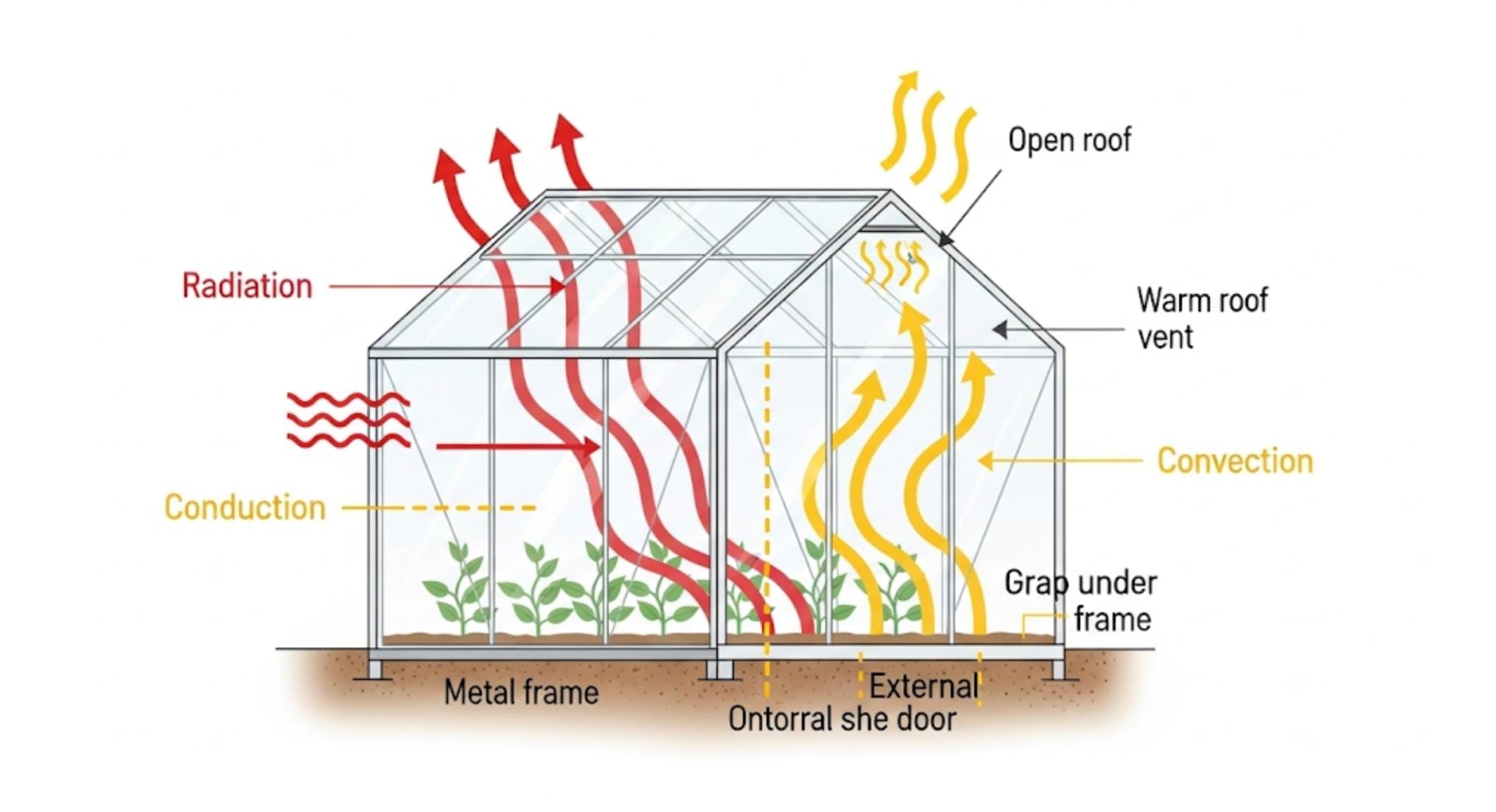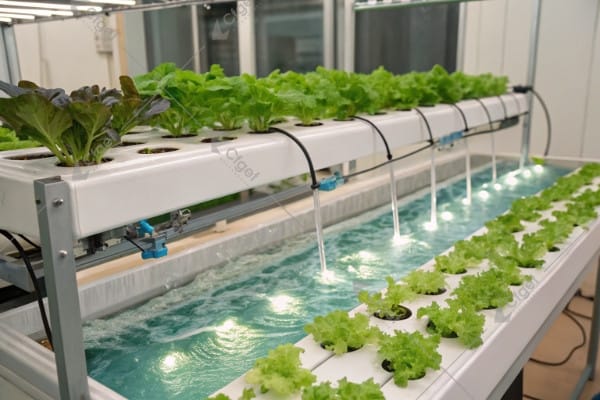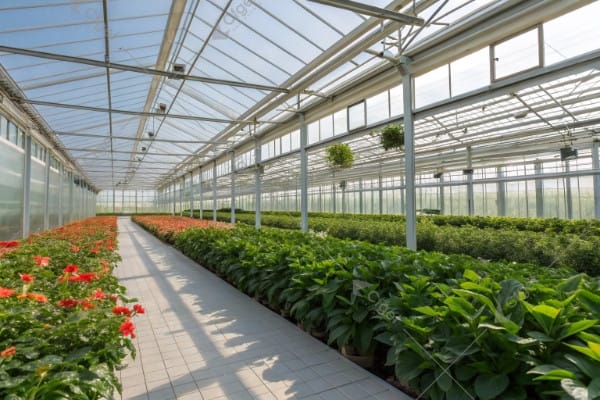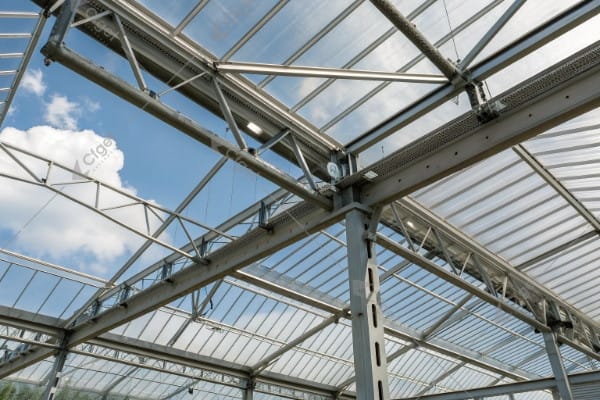As winter approaches, maintaining adequate temperature in your greenhouse becomes a daily struggle. Cold snaps can devastate crops overnight, wiping out months of hard work and significant investment.
Effective greenhouse heating combines proper insulation with the right heating system. By prioritizing insulation first, then selecting appropriate active heating based on your greenhouse size, you can maintain optimal growing temperatures while minimizing energy costs.

After 28 years in the greenhouse industry, I’ve seen countless growers struggle with winter heating challenges. Many invest heavily in powerful heating systems but overlook the fundamentals of heat retention. This approach leads to unnecessarily high energy costs and inconsistent growing temperatures. Let me share what I’ve learned about creating an efficient winter greenhouse environment that protects your plants without breaking the bank.
Don’t Miss:——The Essential Guide to Cannabis Greenhouses: Maximizing Quality & Yield in Controlled Environments?
You might like:——Unlock Blueberry Potential: Why a Greenhouse is Ideal for Growing?
Insulation First: The Key to Reducing Winter Heating Costs?
The mounting costs of heating a greenhouse through winter can quickly eat away at your profits. Many growers make the costly mistake of investing in larger heaters rather than addressing the root problem of heat retention.
Proper insulation should always precede heating system upgrades. By implementing quality insulation systems like thermal curtains and double-wall coverings, you can reduce heating costs by 30-50% while maintaining more stable temperatures for your crops.
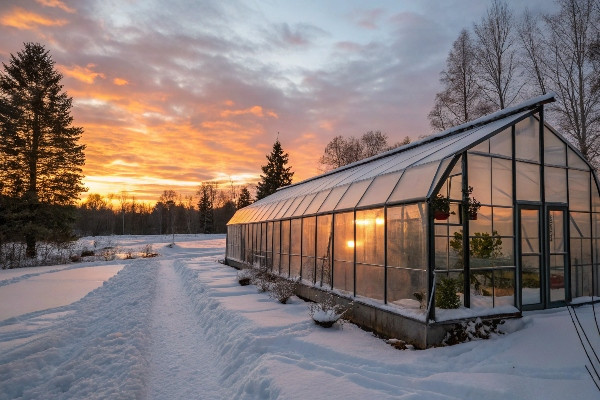
In my experience working with greenhouse operations across diverse climates, insulation is the single most impactful investment for winter efficiency. Last year, I visited a client in Northern Europe who had been struggling with excessive heating costs. Their 2-acre tomato operation was using top-quality heaters, but they were essentially heating the outdoors due to poor insulation.
Commercial greenhouses benefit tremendously from two primary insulation approaches: top insulation and four-sided insulation. Top insulation targets the roof area, where the majority of heat escapes due to the basic principle that heat rises. We installed automated thermal curtains that deploy across the ceiling during night hours, creating a critical barrier that prevents warm air from escaping through the greenhouse roof.
Four-sided insulation complements this by addressing heat loss through the vertical surfaces. For this European client, we implemented a system of insulation curtains that automatically deploy at sunset when outside temperatures drop. These curtains create a buffer zone that significantly reduces heat transfer through the greenhouse walls. The results were remarkable – a 42% reduction in heating costs during the first winter while maintaining more consistent temperatures.
For film-type greenhouses, another effective approach is adding slopes to the exterior design. This dual-purpose feature serves to deflect wind (reducing cold air infiltration) while creating a double-layer insulation effect. The air gap between layers acts as additional insulation, similar to how double-pane windows work in residential settings.
Some clients have found success with bubble wrap insulation as a cost-effective solution for smaller operations. While not as efficient as commercial thermal screens, applying bubble wrap to the interior of the greenhouse covering creates thousands of tiny air pockets that provide surprising insulation value at minimal cost.
Remember, every BTU of heat you retain through insulation is one you don’t need to generate through your heating system. This principle forms the foundation of an efficient winter greenhouse strategy.
Comparing Active Heating Options for Different Greenhouse Sizes?
Selecting the wrong heating system can lead to insufficient temperatures, crop damage, and wasted energy expenditure. Many greenhouse owners struggle to identify the most appropriate heating solution for their specific setup.
The optimal heating system depends largely on greenhouse size, local climate, and crop requirements. Small operations often benefit from portable electric or propane heaters, medium greenhouses typically require forced-air systems, while large commercial operations depend on hydronic heating or central boiler systems.
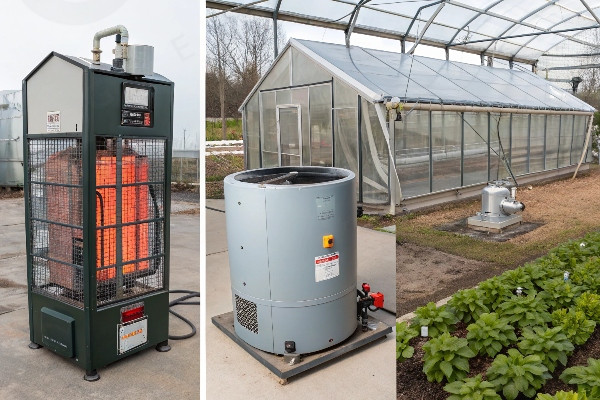
Having installed heating systems in greenhouses ranging from small hobby structures to 10+ acre commercial operations, I can confirm that size is the critical determining factor in heating system selection. Each scale of operation requires a fundamentally different approach.
For small greenhouses under 200 square feet, portable solutions typically provide the best balance of efficiency and cost-effectiveness. Electric space heaters with thermostatic controls offer clean operation without combustion concerns, though their operating costs can be high depending on local electricity rates. Propane space heaters deliver more BTUs per dollar in most regions but require proper ventilation to prevent plant damage from combustion byproducts. I recently helped a small-scale flower grower install a 30,000 BTU propane heater with a simple circulation fan, which provided excellent coverage for their 12′ x 16′ greenhouse at a reasonable operating cost.
Medium-sized greenhouses (200-1,000 square feet) generally require more distributed heating approaches. Forced-air systems work well in this range, using propane, natural gas, or electric heat sources connected to blower systems that distribute warm air throughout the growing space. One innovative solution I’ve implemented for several clients involves embedding heating cables in germination benches, providing targeted root-zone heating where it matters most while maintaining more moderate ambient temperatures. This zoned approach can reduce overall energy consumption by up to 35% compared to heating the entire air volume to uniform temperatures.
Large commercial greenhouses (over 1,000 square feet) almost universally benefit from hydronic heating systems1. These use boilers to heat water that circulates through pipes installed along floors, benches, or perimeters. The thermal mass of the water provides more stable temperatures and allows for zone control. For a 3-acre vegetable operation in Central Asia, we installed a centralized boiler system with multiple heating loops, allowing them to create different climate zones for various crop stages. While the initial investment was significant, their heating cost per square foot dropped by nearly 60% compared to their previous forced-air system.
When evaluating ROI for heating systems, consider not just fuel efficiency but also plant productivity. A slightly more expensive system that provides more consistent temperatures often pays for itself through improved crop quality and reduced disease pressure. Climate control uniformity is particularly important for commercial operations where consistent harvest timing and quality standards must be maintained.
Low-Cost Ways to Add Supplemental Heat in Winter?
Limited budgets can leave greenhouse growers vulnerable to cold damage during winter months. Many assume effective heating requires expensive commercial systems beyond their financial reach.
Several affordable supplemental heating methods can significantly boost greenhouse temperatures without major investment. Thermal mass systems using water barrels, compost heating, passive solar design principles, and strategic microclimates can each raise temperatures by 5-15°F with minimal ongoing costs.
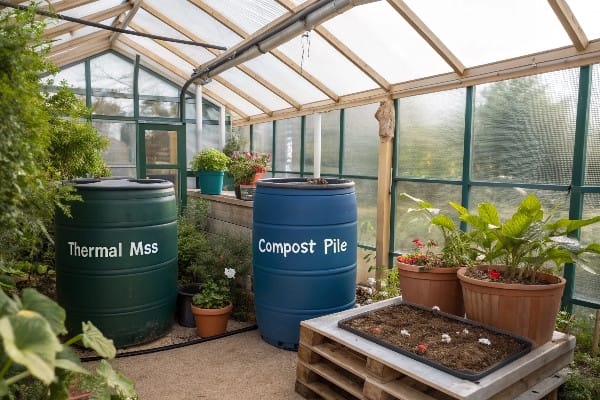
Throughout my career with CFGET, I’ve worked with growers of all budget levels, and I’ve found that creativity often trumps capital when it comes to supplemental heating. Some of the most effective low-cost approaches leverage basic physics principles rather than purchased energy.
Thermal mass represents the simplest and most reliable passive heating approach. Water has exceptional heat capacity, storing solar energy during daylight hours and releasing it slowly overnight. During a consulting project for a community garden initiative with minimal infrastructure budget, we placed fifty-five 55-gallon drums filled with water along the north wall of their greenhouse. The barrels were painted black to maximize solar absorption. This simple intervention raised their overnight minimum temperatures by an average of 8°F during winter months. The beauty of this system lies in its zero operating cost – the sun does all the work.
Compost heating offers another cost-effective approach that actually serves multiple purposes. Active compost piles generate significant heat through microbial activity. For a small herb producer in Eastern Europe, we created a system where fresh compost materials (primarily horse manure and straw) were contained in wire bins placed strategically throughout their greenhouse. These "compost batteries" maintained temperatures above 120°F in their cores for weeks, radiating heat to surrounding plants. As an added benefit, the decomposed compost became planting medium for the next growing cycle, and the CO₂ released during decomposition enhanced plant growth.
Strategic microclimates within the greenhouse can also provide targeted heating where most needed. Cold-sensitive crops can be clustered in the center of the greenhouse, away from exterior walls. Creating "igloos" of floating row cover over individual growing beds adds approximately 4-7°F of protection with minimal expense. One innovative small-scale flower grower I worked with in Southeast Asia built simple "heat tunnels" using clear plastic stretched over hoops inside their main greenhouse. This created a greenhouse-within-a-greenhouse effect that provided critical extra protection for seedlings and cuttings.
Passive solar design principles can be incorporated even in existing structures. Something as simple as placing black-painted rocks on the north side of growing beds increases heat absorption during the day and release at night. For a research greenhouse in Central Asia with extreme temperature fluctuations, we installed a series of black metal drainage pipes along the south wall that absorbed solar energy and radiated heat throughout the night.
These supplemental methods work best when combined with good base insulation as described earlier. The thermal curtains help retain the heat generated by these passive systems, creating a multiplier effect that significantly improves efficiency.
Preventing Heat Loss: Essential Maintenance Checks for Winter?
Overlooked maintenance issues can silently sabotage even the best greenhouse heating systems. Small gaps, deteriorating seals, and equipment inefficiencies often go unnoticed until heating bills skyrocket or crop damage occurs.
A systematic winter maintenance program should include checking for air leaks, inspecting door and vent seals, cleaning heating system components, calibrating thermostats, and verifying circulation fan operation. These routine checks can improve heating efficiency by 15-25%.

After installing hundreds of greenhouse systems over my 28 years with CFGET, I’ve observed that maintenance discipline consistently separates successful winter growing operations from those that struggle. The most sophisticated heating system will underperform if basic maintenance is neglected.
Air leaks represent the most common and costly maintenance oversight. During a recent energy audit for a 1.5-acre greenhouse complex in Europe, we discovered that small gaps around doors, vents, and utility penetrations were collectively equivalent to leaving a window open year-round. The simple application of weatherstripping, caulk, and expanding foam sealed these leaks, resulting in an immediate 18% reduction in heating costs. I recommend a simple but effective leak detection method: on a cold, windy day, walk slowly around the interior perimeter of your greenhouse with a lit incense stick. Air movement will cause the smoke to waver, pinpointing infiltration points that need sealing.
Vent and door seals deserve special attention as these moving components experience the most wear. Rubber gaskets harden and crack over time, especially in areas with temperature extremes. For a commercial flower operation in Central Asia, we implemented a semi-annual seal replacement program that proved far more economical than dealing with heat loss and fluctuating temperatures. Silicone-based lubricants applied to these seals in late fall can extend their lifespan and improve their sealing capability throughout winter.
Heating system components require regular maintenance that many growers postpone until problems arise. Circulating fans accumulate dust that reduces their efficiency and potentially creates fire hazards. Boiler systems develop scale that impedes heat transfer. During a maintenance visit to a tomato greenhouse last year, we discovered that neglected circulation fans were operating at approximately 65% of rated capacity due to dust buildup on the blades. A simple cleaning restored proper air movement, eliminating cold spots that had been affecting crop uniformity.
Calibration of environmental controls often drifts over time. Temperature sensors placed in improper locations or affected by direct sunlight give false readings that trigger unnecessary heating cycles. For a research institution in Southeast Asia, we discovered their heating system was running up to 30% more than necessary simply because their temperature sensors were mounted too close to exterior walls, reading artificially low temperatures compared to the plant zone.
A systematic approach to maintenance pays dividends. I recommend creating a specific winter preparation checklist tailored to your greenhouse systems. This should include inspection points, maintenance tasks, and critical replacement items to have on hand before severe weather arrives. The small investment of time in preventative maintenance2 consistently yields returns in energy savings and crop protection.
One client in Northern Europe created an excellent model: they perform a comprehensive system check in early autumn, addressing all maintenance issues before the heating season begins. They then conduct weekly mini-inspections throughout winter, focusing on high-failure-risk components. This proactive approach has virtually eliminated mid-winter heating emergencies at their facility.
Conclusion
Effective winter greenhouse heating starts with proper insulation, followed by right-sized heating systems and supplemented by low-cost alternatives. Regular maintenance prevents heat loss. This comprehensive approach ensures your plants thrive while your heating costs remain manageable.
Explore the advantages of hydronic heating systems, which can significantly improve temperature stability and reduce heating costs in large greenhouses. ↩
Discover essential preventative maintenance practices that can enhance heating efficiency and protect your crops from cold damage during winter. ↩

